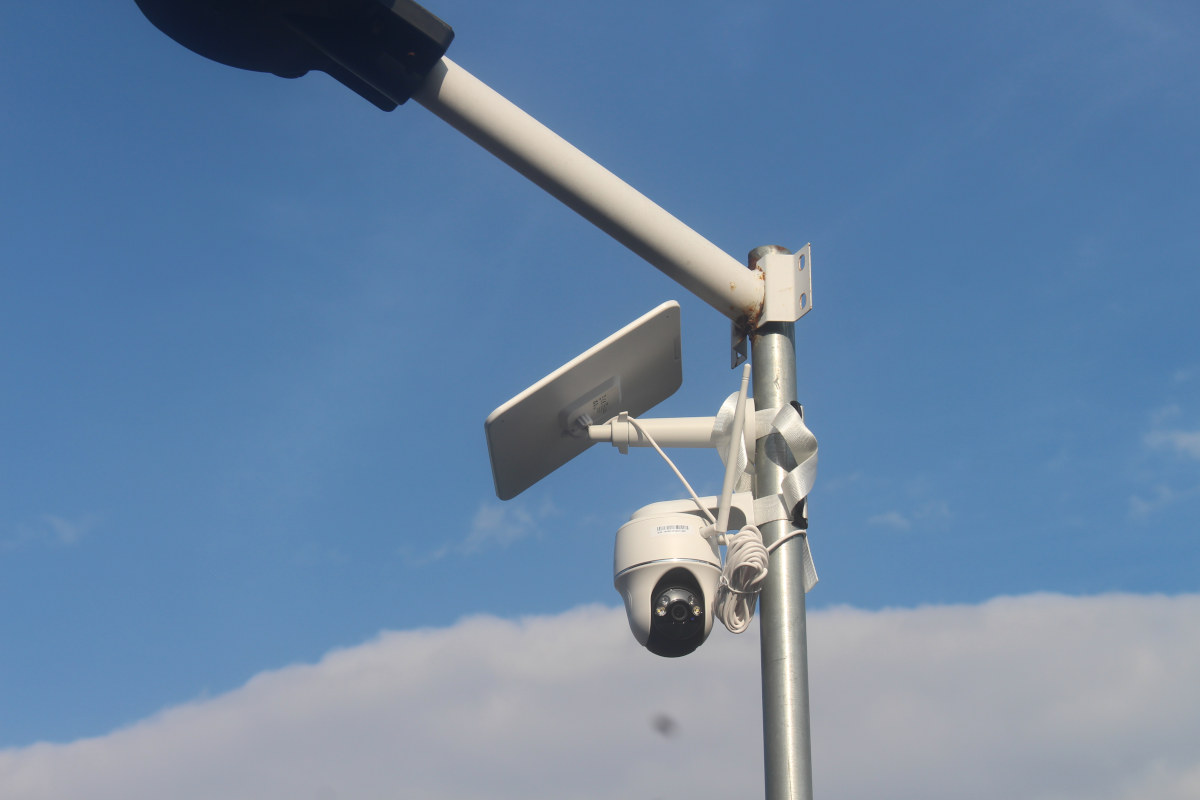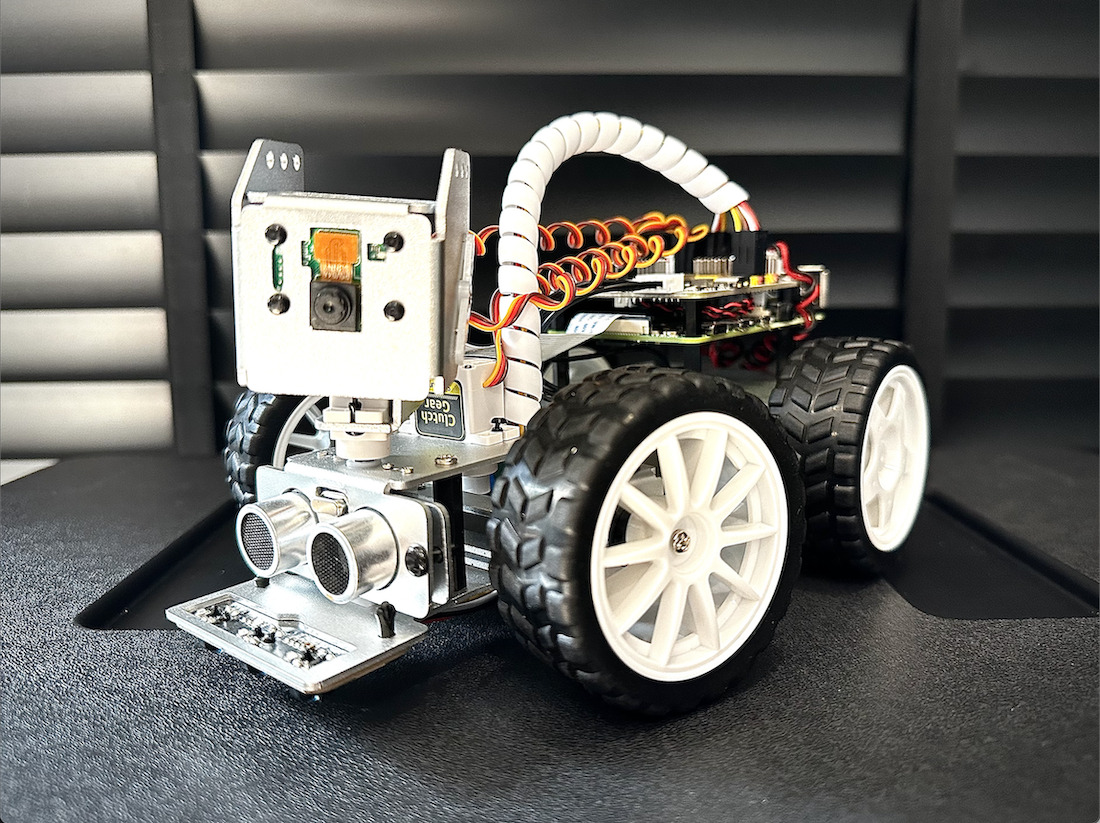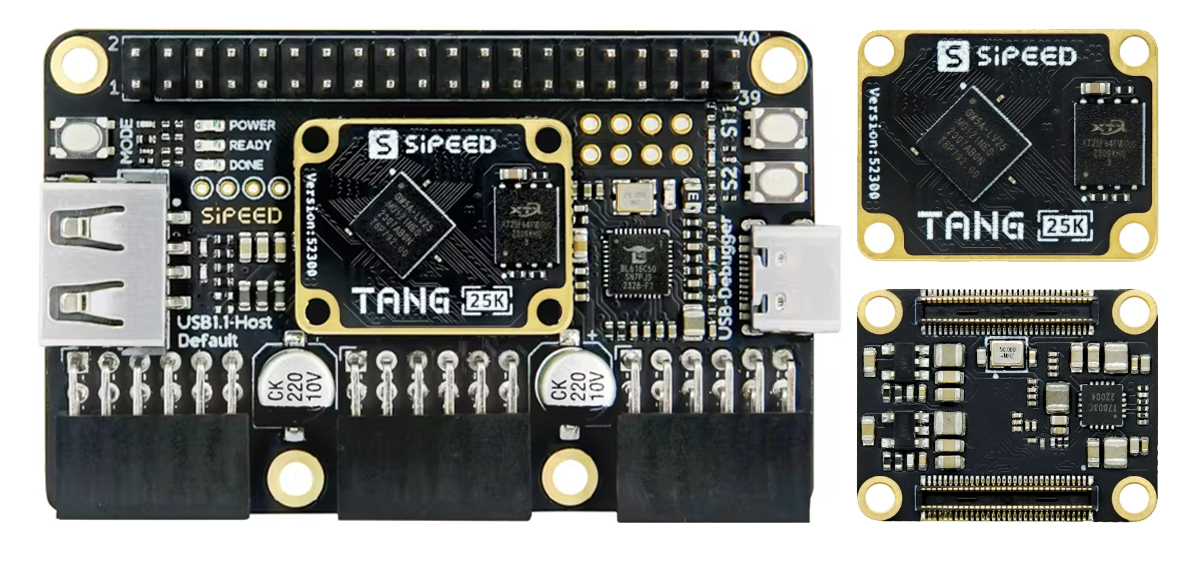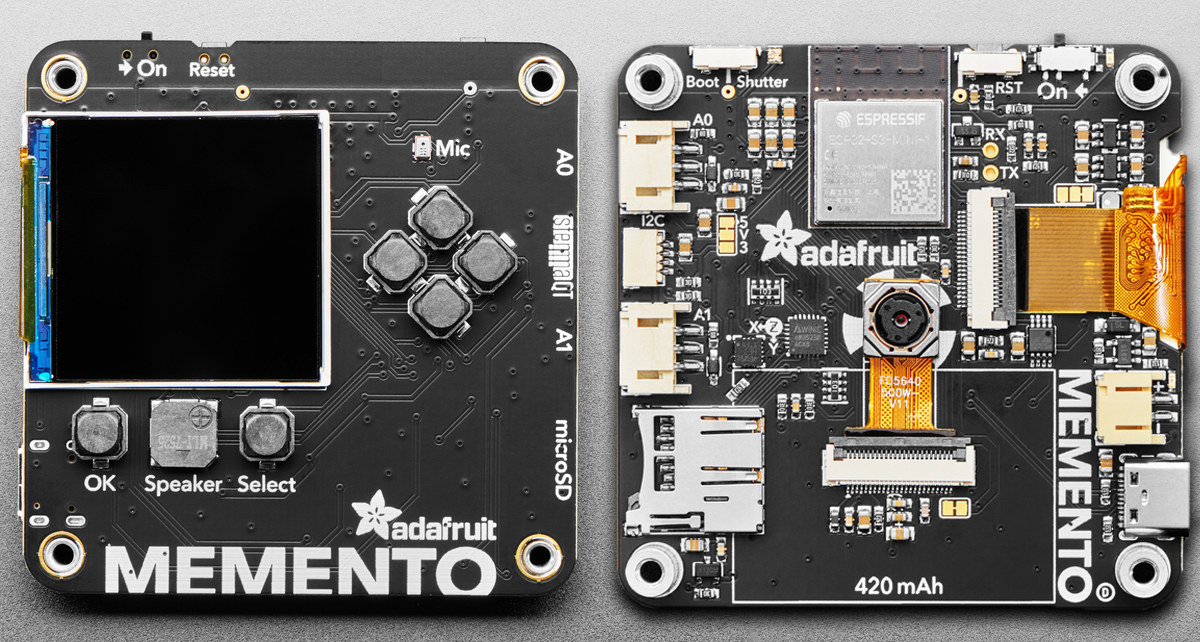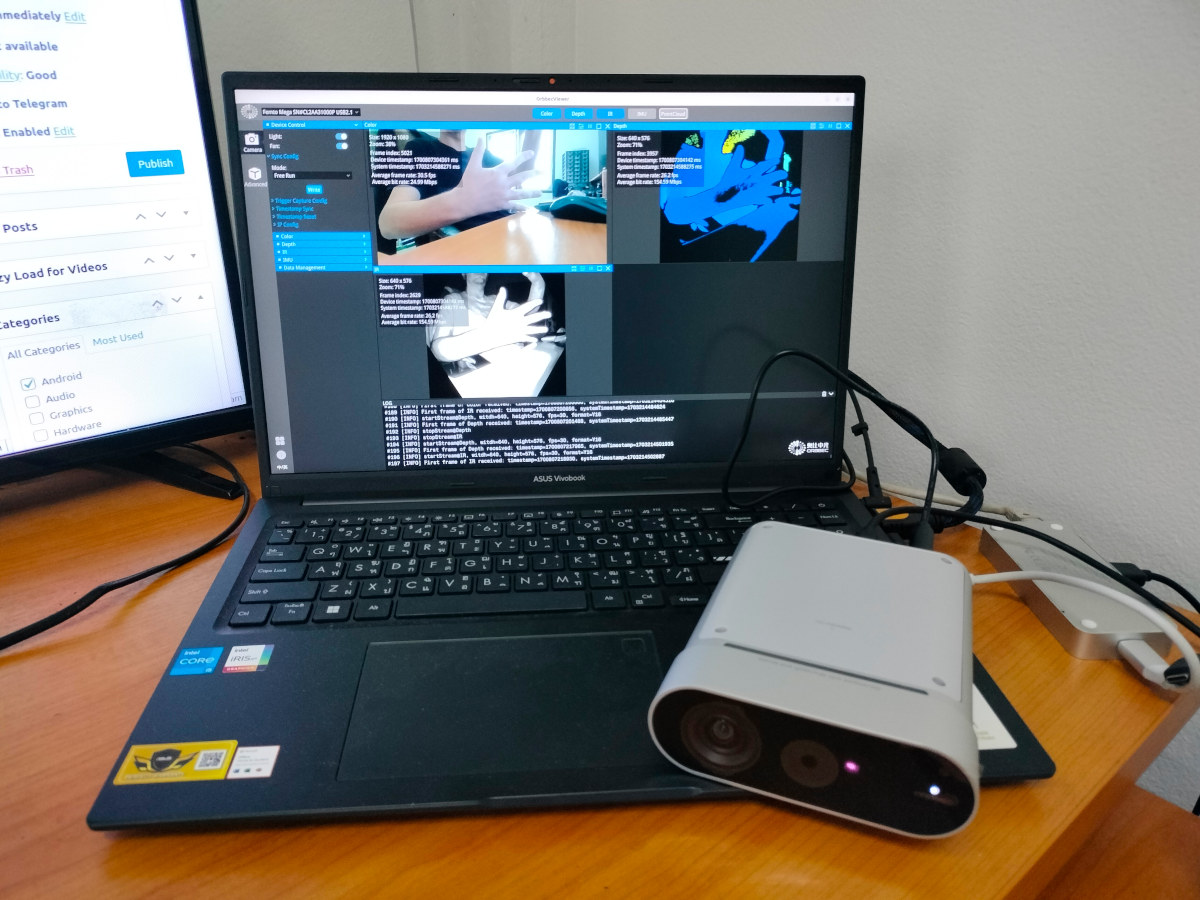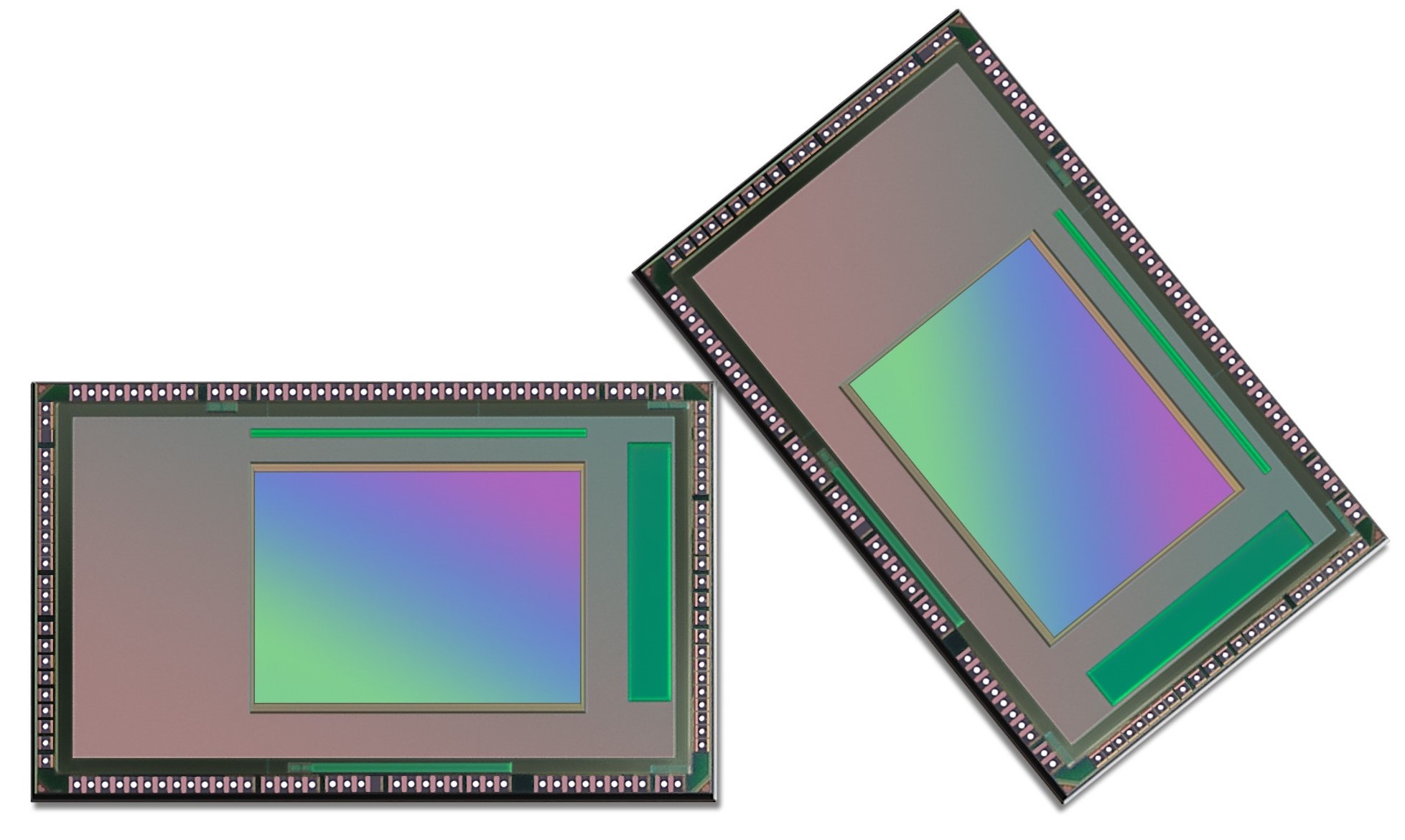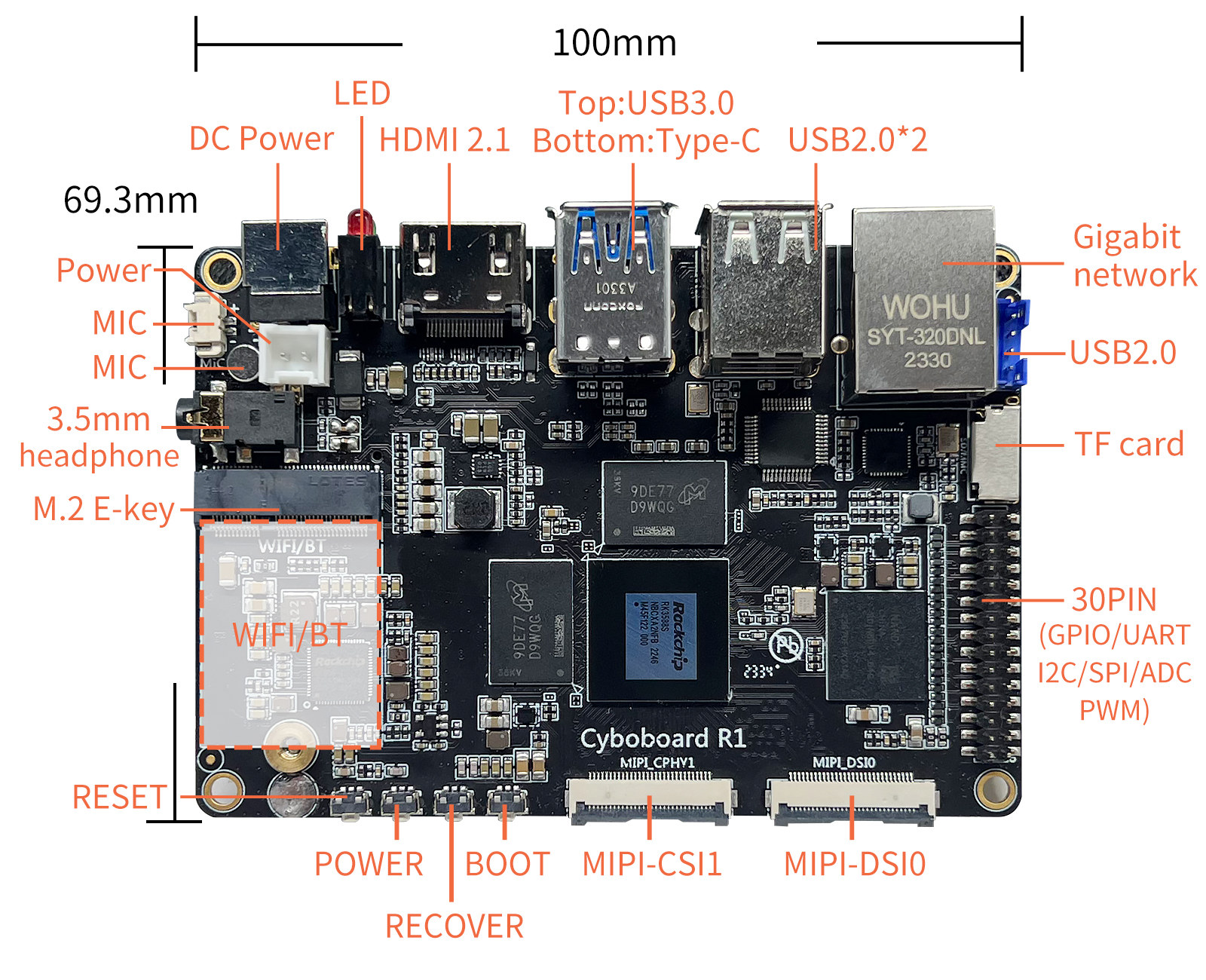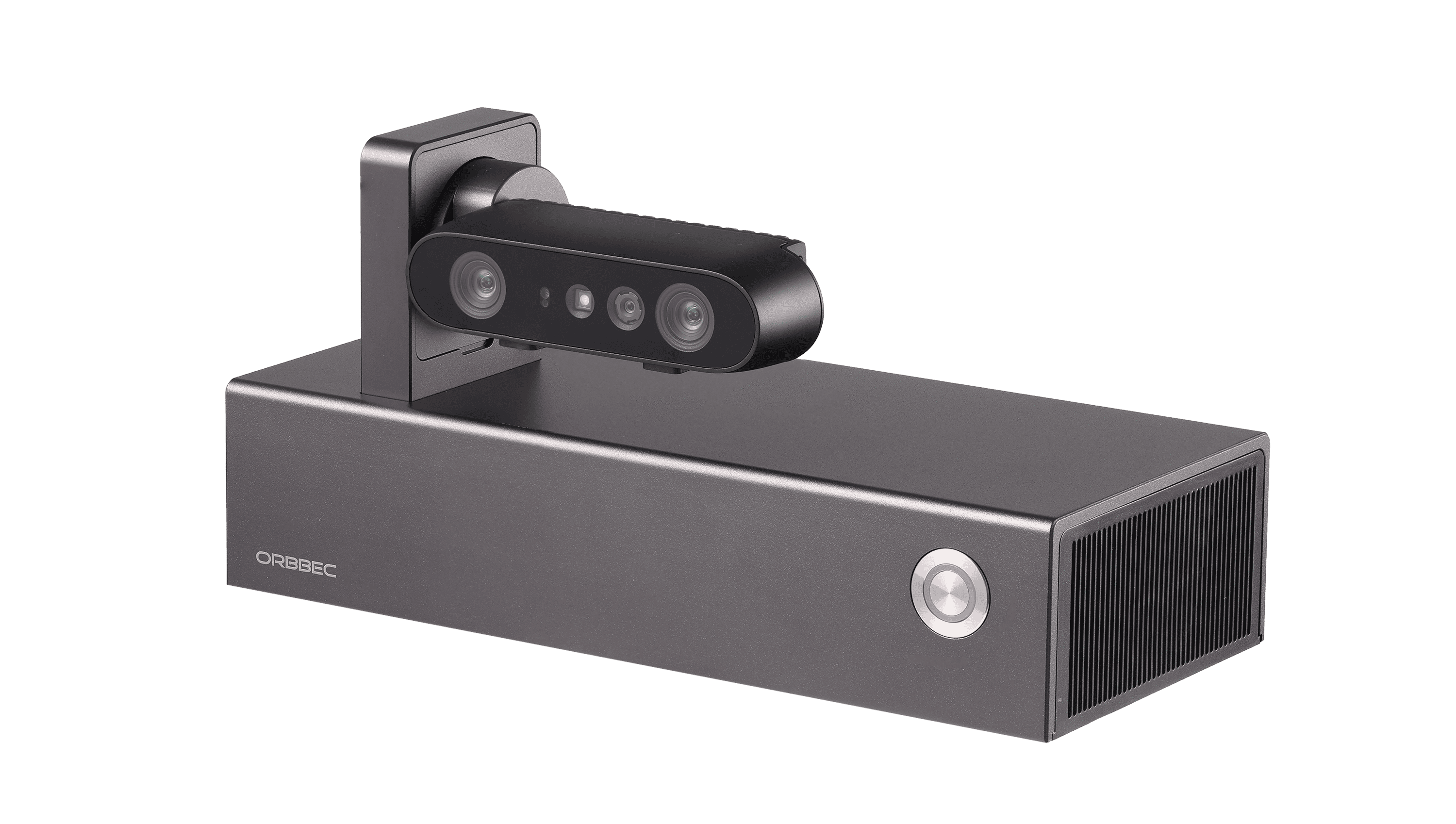Nearly four years ago, I reviewed the solar-powered Reolink Argus PT pan-and-tilt security camera. The device worked (and still works) mostly fine, but it was at a time when security cameras did not implement AI features like people and vehicle detection just yet relying only on PIR motion sensors so I’d get plenty of false positives. The WiFi connection is not overly reliable either especially when I tried to access the camera from outside my house, something that does not happen with the PoE and 4G LTE models from the company. Reolink asked me whether I wanted to review the new Reolink Argus PT Ultra security camera with higher 4K resolution, dual-band WiFi support, as well as people, vehicle, and pet detection, and most of the same other features found on the older Argus PT. So I took up on the offer and I’ve used it for about one month […]
SunFounder PiCar-X 2.0 review – A Raspberry Pi 4 AI robot car programmable with Blockly or Python
SunFounder PiCar-X 2.0 is an AI-powered self-driving robot car using the Raspberry Pi 3/4 as the main processing board. It is equipped with a camera module that can be moved by a 2-axis servo motor, allowing the camera to pan or tilt, an ultrasonic module for detecting distant objects, and a line detection module. The PiCar-X robot can also perform computer vision tasks such as color detection, face detection, traffic signs detection, automatic obstacle avoidance, and automatic line tracking. The PiCar-X can be programmed with two computer languages: Blockly-based Ezblock Studio drag-and-drop program and Python, and the robot works with OpenCV computer vision library and TensorFlow for AI workloads. Finally, you can also control the robot through the SunFounder controller application on your mobile phone. The company sent us a sample of the Picar-X 2.0 for review, so let’s get started. SunFounder PiCar-X 2.0 robot overview The PiCar-X robot kit […]
Sipeed Tang Primer 25K board features 23,040 Logic Cells for FPGA prototyping and development
Sipeed has recently introduced the Tang Primer 25K, an FPGA board powered by Gowin Semi GW5A-LV25MG121 chip. This board features 23,040 LUTs, USB Host capability, and an optional SDRAM module that unlocks vintage gaming. We have previously covered many FPGA boards like Sipeed Tang Mega 138K Pro, Fudan Micro JFM7K325T, ILYGO T-FPGA, and many other development boards by Sipeed including the Sipeed Tang Nano 20K with a Gowin GW2A FPGA. You can check those out if interested. The Tang Primer 25K development board is divided into the 25K SoM Board and the 25K Dock Board together they offer a comprehensive set of features: GW5A-LV25MG121 specifications: 23040 LUT4 23040 Registers (FF) 28x 18×18 Multipliers 6x PLLs Memory/Storage: 64Mbit NOR Flash 180K Distributed S-SRAM 1008K B-SRAM (bits) 56 Number of B-SRAM I/O Interfaces: 3x PMOD 40-pin header 2x buttons 8x I/O banks 75x General IO MIPI IO – 4lane Data USB Ports: […]
MEMENTO is an ESP32-S3-based, CircuitPython or Arduino programmable DIY camera module
Adafruit’s new MEMENTO – Bare Board Camera module is powered by the ESP32-S3 and can be programmed with CircuitPython or Arduino. The module includes a camera with an OV5640 sensor which features auto-focus capabilities and the board includes a 1.54″ 240×240 Color TFT to display the images. Previously we have covered many ESP32-based camera modules like the TinyML-CAM, the Arduino Nicla Vision, TTGO T-Camera, and many other camera modules that feature the OV5640 sensor you can check those out if interested. Features and Specifications of the MEMENTO ESP32 Camera Module: Processing and Connectivity ESP32-S3 Module Dual-core 240MHz Tensilica processor 8 MB Flash, 2 MB PSRAM WiFi and BTLE capabilities Camera and Display OV5640 Camera Module 5MP sensor 72-degree view Autofocus JPEG encoder 1.54″ Color TFT Display with 240×240 resolution Storage – MicroSD card slot (SPI) Ports and Expansion Two Digital/Analog Stemma Ports – JST PH-3 connectors for A0, A1, power, […]
Orbbec Femto Mega 3D depth camera review – Part 1: Unboxing, teardown, and first try
Orbbec sent us a Femto Mega 4K RGB and 3D depth and camera for review. The camera is powered by an NVIDIA Jetson Nano module, features Microsoft ToF technology, and outputs RGB, TOF, and IR data through a USB-C port or a gigabit Ethernet port. I’ll start the two-part with an unboxing, a teardown, and a quick try with the OrbbecViewer program on Ubuntu 22.04 in the first part of the review because checking out the software and SDK in more detail in the second part later on. Femto Mega depth and RGB camera unboxing I received the camera in a cardboard package showing the camera model and key features: “ORBBEC Femto Mega DEPTH+RGB CAMERA”. The package’s content is comprised of a USB-C cable to connect to the host, the camera, and a 12V/2A power adapter. The front side of the camera features the RGB camera sensor, the TOF (Time-of-Flight) […]
Samsung announces ISOCELL Vizion 63D and Vizion 931 sensors for robotics and extended reality applications
Samsung Electronics, the world’s second-largest technology company by revenue, has introduced two new camera sensors in its ISOCELL Vizion lineup, the Vizion 63D and the Vizion 931. The Vizion 63D is the world’s first indirect time-of-flight (iToF) sensor with an integrated depth-sensing image signal processor (ISP) according to the company, and is tailored for capturing high-resolution 3D images. The Vizion 931 is a global shutter sensor that has been optimized to capture rapid motion without visible distortion. The 63D is an indirect time-of-flight sensor that measures the phase shift between emitted and reflected light and uses this measurement to construct a 3D map of its surroundings. It features an integrated image-signal processor that performs depth sensing and can reportedly process images at up to 60 frames per second in QVGA resolution (320×240). Vizion 63D captures images at a pixel size of 3.5 µm (the industry’s smallest in iToF sensors, according […]
Youyeetoo R1 – A feature-rich Rockchip RK3588S SBC with M.2 sockets, NFC, etc.. for $99 and up
Youteetoo Cyboboard R1, or just Youyeetoo R1 for shorts, is a Rockchip RK3588S SBC that packs quite a lot of features in a 100×69.3mm form factor with two M.2 sockets for NVME/SSD or 4G LTE, and WiFi and Bluetooth connector, support for NFC, four display interfaces, two MIPI CSI camera interfaces and more. The board is offered with up to 32GB RAM and 256GB eMMC flash, and also comes with a gigabit Ethernet port, five USB interfaces, a built-in microphone, several audio inputs/outputs, a 30-pin header for expansion, and it can support HDMI input via an adapter connected to one of the MIPI CSI ports. Youyeetoo R1 specifications: SoC – Rockchip RK3588S CPU – Octa-core processor with 4x Cortex-A76 cores @ up to 2.2-2.4 GHz, 4x Cortex-A55 cores @ up to 1.8 GHz GPU – Arm Mali-G610 GPU with OpenGL ES 3.2, OpenCL 2.2, and Vulkan 1.2 support VPU – […]
Persee N1 – A modular camera-computer based on the NVIDIA Jetson Nano
The Persee N1 is a modular camera-computer kit recently launched by 3D camera manufacturer, Orbbec. Not too long ago, we covered their 3D depth and RGB USB-C camera, the Femto Bolt. The Persee N1 was designed for 3D computer vision applications and is built on the Nvidia Jetson platform. It combines the quad-core processor of the Jetson Nano with the imaging capabilities of a stereo-vision camera. The Jetson Nano’s impressive GPU makes it particularly appropriate for edge machine learning and AI projects. The company also offers the Femto Mega, an advanced and more expensive alternative that uses the same Jetson Nano SoM. The Persee N1 camera-computer also features official support for the open-source computer vision library, OpenCV. The camera is suited for indoor and semi-outdoor operation and uses a custom application-specific integrated circuit (ASIC) for enhanced depth processing. It also provides advanced features like multi-camera synchronization and IMU (inertial measurement […]


